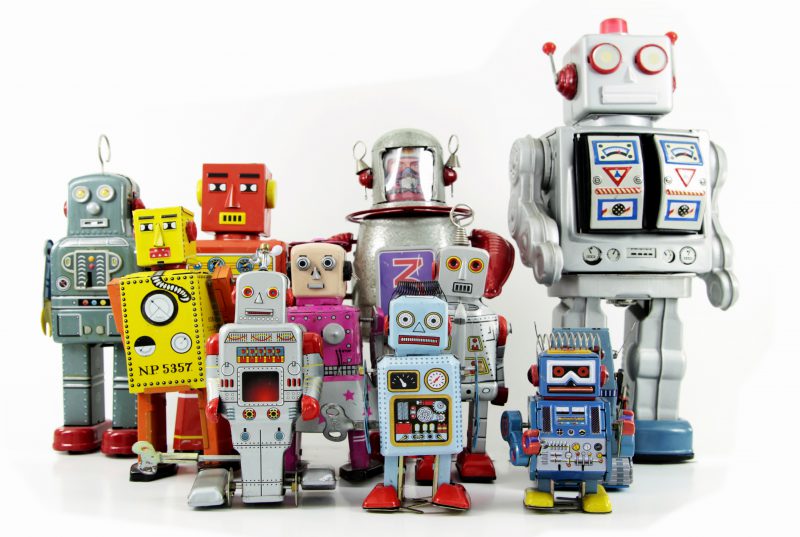
The Internet of Things (or IoT) has been hailed as the next big thing to revolutionize manufacturing. A series of sensors can be attached to manufacturing equipment to continuously measure machine status, output, temperature and other factors that influence production, maintenance, and efficiency. Through machine learning and artificial intelligence, these data can then be used to predict and optimize maintenance, output, and performance. The idea of being able to continuously monitor your entire production line in near real time sounds both amazing and overwhelming…not to mention expensive. For this blog post, Pandata teamed up with an Industrial IoT expert, Matt Zupan, to put together a crash course on setting up an IoT solution to monitor machine efficiency in a manufacturing environment. We hope to demonstrate that IoT solutions both add significant business value and can be accessible to the manufacturer both large and small.
Step 1: Define a clear and manageable goal
While it may be tempting to immediately wire up all machines and then figure out what to do with the data later, it is important to first set a tractable business goal to minimize wasted time and money. In addition to sensor data, any business intelligence requires additional data sources. When measuring machine efficiency, that additional information includes production schedules. What pain points do you have with production and how might data be able to give insight into the problem? For an IoT solution to be successful, one must also start small with just a few machines and key personnel.
Step 2: Sensor selection and implementation plan.
In addition to the technical specifications, important aspects to keep in mind at this stage are the goal, cost, and scalability. Off-the-shelf sensor hardware is increasingly reliable and affordable. However, unless you are a $100M+ company, it’s likely that your production equipment is a hodgepodge of things old and new. Some machines can communicate over ethernet, which as an IoT practitioner is ideal. Others communicate digitally. Sometimes, a transducer must be precisely installed, and this can potentially be a multi-day process for the most skilled technician. Depending on the difficulty of connecting sensors, it may be necessary to refine your goal. Security should always be a top consideration when dealing with anything internet-enabled. A single sensor with a default password can let a hacker into the entire intranet.
Step 3: Data environment.
Next, it is time to design a way to centralize and store the data. If you are buying sensors that include cloud data storage, this may be already set. However, if you are designing custom sensors, want to have more flexibility, or integrate across sensors from different brands, then it may be a better option to build your own database. As insights gained will likely rely on organizational data, a common interface will be required. Factors to consider include cloud versus on-premise server, existing infrastructure, and scalability. While some sensors will have built-in integration with more common platforms, there may be some need for significant data engineering.
Step 4: How will you look at your data?
Dashboards distill data into manageable visuals so that the user can gain insight into the overall behavior of the data. If you have a sensor that comes with its own dashboard, then that is a great place to start. If not, dashboarding tools such as PowerBI or Tableau are relatively inexpensive, user-friendly and contain manufacturing-specific features. They can interface with sophisticated databases as well as traditional spreadsheets, providing a low barrier for entry as manufacturing data analysis is today often done with spreadsheets.
Step 5: Analytics
For many users, dashboarding may be enough to answer the initial business question. However, others may want to use sensor data for predictive analytics or machine learning. IoT data can grow quickly, especially if multiple sensors are used. This kind of data set may be ideal for complex analyses to identify patterns. A few example applications include predictive maintenance, optimally distributing workloads across machines, and supply chain optimization. The firms which can marry production data and quality data in real time to get predictive insights are going to be the most formidable moving into the future.
Conclusions
Setting up a “smart” manufacturing environment should be achievable for even the small and midsized manufacturers. However, it is essential to always have a well-defined goal, to start small, and validate at every stage. The value gained in using data to optimize processes will likely far outweigh the initial investment, setting your organization up for long term success.
Just starting out with IoT applications and need help with data infrastructure or analytics? Pandata can help set you on the right path. Contact us at hello@pandata.co to start the conversation.
Hannah Arnson is Lead Data Scientist at Pandata and Matt Zupan is an IIoT Systems Architect at Micron Manufacturing.